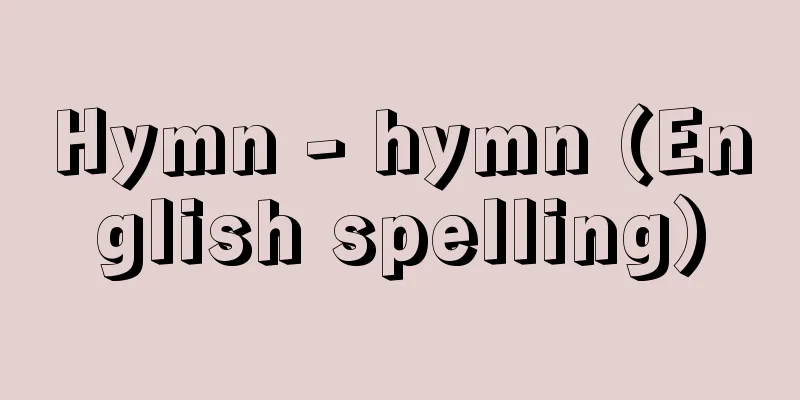New National Theatre

|
The name of the theater company. A popular theater company founded in 1917 (Taisho 6) with Sawada Shojiro as its leader. The name Shinkokugeki came from Sawada, who had been performing on the stage of new theater until then, becoming dissatisfied with it and aiming to create a "new national theater" that would be popular with a wider range of the general public. In April of the same year, with the cooperation of Shochiku, the company held its inaugural performance at the Shintomi-za in Tokyo. However, it was a box office failure and the company moved to Kansai, and the Minami-za in Kyoto also had a poor attendance, but the performance at the Kado-za in Osaka in July was well-received for the realistic fight scenes devised by Sawada. Shochiku Osaka focused on promoting Sawada, using the Benten-za as its base, and Sawada's dedication to popular theater, which he mocked as "evil theater," quickly led to a boom, and the company expanded from eight members in Kyoto to 120 members the following year. With Yukitomo Rifu as the resident playwright, the company established its foundation with plays such as "Haru Tsuge-dori," "Tsukigata Hanpeita," "Kanrei Yawa," and "Kunisada Chuji." In 1921 (Taisho 10), the company moved to the east and performed at the Meijiza Theater, avenging the failure of its founding. Sawada advocated a half-step forward approach, and with the motto "art on the right, the masses on the left," the company developed smoothly with hard-boiled plays and popular swordplay. In 1923, while performing at the Asakusa Park Theater, there was trouble with a policeman who mistook the members of the company sitting in a circle eating sushi for gambling (the Kisakata Incident), and then the Great Kanto Earthquake occurred. Shortly after, they performed "The Origin of Jizo Kyo" and "Kanjincho" and other plays at the Hibiya Open-Air Concert Hall to entertain the public, and were a great success. They then expanded into the Imperial Theater and other venues, ushering in the heyday of Shinkokugeki, but Sawada died suddenly in 1929 (Showa 4). After the death of the head of the troupe, the company faced difficulties for a time, but with the promotion of young actors Shimada Shogo and Tatsumi Gosaku (Tatsumi Ryutaro), the troupe was able to rebuild smoothly and performances at large theaters became a regular feature. Shimada inherited the famous kyogen plays of his master, "Shirano Benjuro" and "Kutsukake Tokijiro," while Tatsumi inherited "Kunisada Chuji." In addition, they added Hasegawa Shin's Matatabimono plays, and also collaborated with modern playwrights such as Hojo Hideji. "Osho" became Tatsumi's masterpiece, and "Kiri no Oto" became Shimada's masterpiece. In 1967 (Showa 42), the troupe celebrated its 50th anniversary and launched a new system centered around Oyama Katsumi and Ogata Ken. However, due to a series of unfavorable circumstances, including Ogata's departure, the company's operations did not go smoothly, and Shinkokugeki Co., Ltd. went bankrupt in 1979. Performances were slowly resumed with Shimada and Tatsumi at the center, but the company disbanded in September 1987 (Showa 62) after the performance commemorating the 70th anniversary of the company's founding. [Hiroshi Fujita] Source: Shogakukan Encyclopedia Nipponica About Encyclopedia Nipponica Information | Legend |
|
劇団名。1917年(大正6)沢田正二郎を盟主として創立された大衆劇団。新国劇の名は、それまで新劇の舞台に立っていた沢田がこれに飽き足らず、より広範な一般大衆に親しまれる「新しい国劇」を目的としたのによる。同年4月松竹の協力で東京の新富座で旗揚げ公演をもった。しかし興行的には失敗し、関西に移り、京都・南座でも不入りであったが、7月の大阪・角座(かどざ)の公演は、沢田が考案したリアルな立回りで評判をとった。松竹大阪が弁天座を根城に沢田売出しに力を入れ、沢田も「邪劇(じゃげき)」と自嘲(じちょう)する大衆劇への徹し方でたちまち活況を呈し、京都で座員8名であったのが翌18年には120名に膨張。行友李風(ゆきともりふう)を座付作者に迎え、『春告鳥』『月形半平太』『函嶺夜話』『国定忠治(くにさだちゅうじ)』などで基礎を固めた。21年(大正10)東上して明治座で公演、創立時の失敗を雪辱する。沢田は半歩前進主義を唱え、「右に芸術、左に大衆」をモットーに硬派の演劇と大衆的な剣劇で劇団は順調に発展していった。23年浅草公園劇場出演中、座員が円座になってすしを食べているのを賭博(とばく)行為と誤解した警官とのトラブル(象潟(きさかた)事件)に続いて関東大震災。直後に日比谷(ひびや)の野外音楽堂で『地蔵教由来』『勧進帳』ほかを市民慰安として公演し成功を収め、その後も帝国劇場などに進出して新国劇の全盛時代を築いたが、29年(昭和4)に沢田が急死。 座長の死後一時期難関にたたされたが、青年俳優の島田正吾(しょうご)と辰巳(たつみ)吾作(辰巳柳太郎)が抜擢(ばってき)されて、劇団の再建は順調に進み、大劇場公演も定着していった。島田は『白野弁十郎(しらのべんじゅうろう)』『沓掛時次郎(くつかけときじろう)』、辰巳は『国定忠治』という師の当り狂言を受け継ぐほか、長谷川伸(はせがわしん)の股旅物(またたびもの)を加え、一方では北条秀司(ひでじ)ら現代劇作家とも提携、『王将』は辰巳、『霧の音』は島田の代表作となった。1967年(昭和42)には創立50周年を迎え、大山克巳(かつみ)、緒形拳(おがたけん)を中心とする新体制を出発させた。しかし、緒形の退団ほか悪条件が重なり、劇団運営が円滑にいかないまま、79年株式会社新国劇が倒産。島田・辰巳を中心に公演活動が細々と再開されてきたが、劇団創立70周年記念公演終了後の87年(昭和62)9月解散した。 [藤田 洋] 出典 小学館 日本大百科全書(ニッポニカ)日本大百科全書(ニッポニカ)について 情報 | 凡例 |
<<: Private prosecution - shinkokuzai
>>: Qing Dynasty Administrative Law - shinkokugyoseiho
Recommend
Honjo [village] - Honjo
A village in Minamiamabe County, southeastern Oita...
Obuke Irrigation Canal
...A village in Nakakubiki District, southern Nii...
EDSAC - Edsac
" Electronic Delay Storage Automatic Calculat...
Pomponia adusta (English spelling)
…[Masami Hayashi]. . … *Some of the terminology e...
Garner, A. - Garner
...C.S. Lewis dealt with issues of good and evil ...
Stephanites and Ichnerates (English spelling)
The Greek version of the Sanskrit Panchatantra, a ...
Ichikawa Danjuro (10th generation)
...The name Soshian was given to him by Fujitani ...
Estate - Shoryo
A general term for land privately owned by feudal ...
Hyakudayu - Hyakudayu
The patron saint of wandering courtesans and puppe...
Chaghan ebugen (English spelling)
In Mongolian, it means "white old man." ...
Sword fittings
The exterior of a sword, also called koshirae, is ...
Oryx gazella (English spelling) Oryxgazella
...Shoulder height 85-140cm, body length 160-235c...
Zixia - Shika
A scholar of the Spring and Autumn period in Chin...
National Council for the Restoration of Democracy and Promotion of Unification of Korea, Japan Headquarters
...In April 1960, after the collapse of the Syngm...
Inverse cotangent function
…Similarly, the inverse function of the cosine fu...









